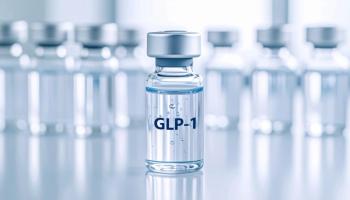
Updated Criteria to Accelerate Multiple Sclerosis Diagnosis, Slash Misdiagnosis
A panel of multiple sclerosis experts recently modified the 2010 McDonald Criteria to improve the diagnostic process.
A 30-member international panel of multiple sclerosis (MS) experts recently revised the McDonald Criteria for the Diagnosis of Multiple Sclerosis, according to a press release from the National Multiple Sclerosis Society.
The lack of a single diagnostic test for MS presents a significant challenge to both patients and health care providers. Patients can experience adverse events for an undetermined amount of time while their providers work to determine the cause of the symptoms.
The current diagnostic process includes evaluating information from clinical examination, medical history, laboratory tests, and MRI imaging of the brain and spinal cord. These tests are intended to rule out other neurological conditions.
“Treating MS early and effectively is our best current way to limit permanent damage to the nervous system, so speeding the diagnosis of MS with improved accuracy is an important goal,” said Bruce Cohen, MD, professor, Davee Department of Neurology and Clinical Neurosciences, Northwestern University, and chair of the National MS Society’s National Medical Advisory Committee.
A key to
Due to a substantial amount of data that has emerged since the 2010 version was released, a panel revised the McDonald Criteria to improve the speed and accuracy of MS diagnosis. The latest edition of the criteria was published in The Lancet Neurology.
The panel reviewed current diagnostic criteria and studies that were published after the 2010 criteria were published to develop evidence-based recommendations.
There were several components of the criteria that have not changed in the updated guidelines:
· MS should be diagnosed by a provider with related expertise, in addition to confirmatory imaging and testing.
· Dissemination of lesions in space and time are still required, but providers can now do so through additional avenues.
· Confirming there is no alternative diagnosis is a crucial consideration.
· The criteria still apply to patients with a typical clinically isolated syndrome (CIS).
There were also several important changes to the McDonald Criteria highlighted by the release:
· The discovery of oligoclonal bands in the spinal fluid can substitute for dissemination of lesions in time for certain patients.
· Now, providers can consider both asymptomatic and symptomatic MRI lesions in determining dissemination in space or time, according to the release. However, the experts said that this change does not include MRI lesions in the optic nerve in patients with optic neuritis.
· Cortical lesions can now be added to juxtacortical lesions when determining MRI criteria for dissemination in space.
The panel also had several recommendations for providers diagnosing patients with MS:
· Brain MRIs should be obtained during the diagnostic process and spinal MRIs should only be obtained for confirmation purposes, according to the release.
· For patients whose spinal fluid is tested during diagnosis, paired serum and cerebrospinal fluid (CSF) samples should be analyzed to establish that oligoclonal bands are unique to CSF.
· Providers should outline the course of the disease and whether it is active or progressive. The criteria said that the type and course of MS should be re-evaluated from time to time.
The experts said that newer studies show that misdiagnosis of MS is fairly common. The revisions stress that if a patient does not have typical CIS or have characteristics that make them less likely to develop the condition, further testing can help determine whether a patient has MS or another condition, according to the release.
The panel recommends that the 2017 criteria be evaluated in studies and that further research address
“Efforts like the work of this international panel illustrate the National MS Society’s role as a convening force to push forward progress that not only improves clinical care, but also identifies research gaps and opportunities,” said Bruce Bebo, PhD, executive vice president of Research at the National MS Society. “The paper highlights the need for research to identify additional biological markers of MS and its subtypes. This gap impedes progress on several fronts, making it a critical target for the global MS research community.”
Newsletter
Stay informed on drug updates, treatment guidelines, and pharmacy practice trends—subscribe to Pharmacy Times for weekly clinical insights.

















































































































































































































